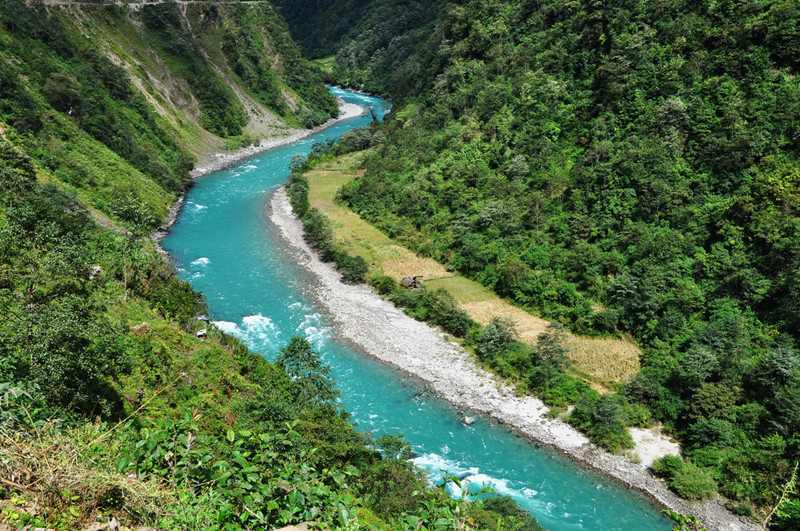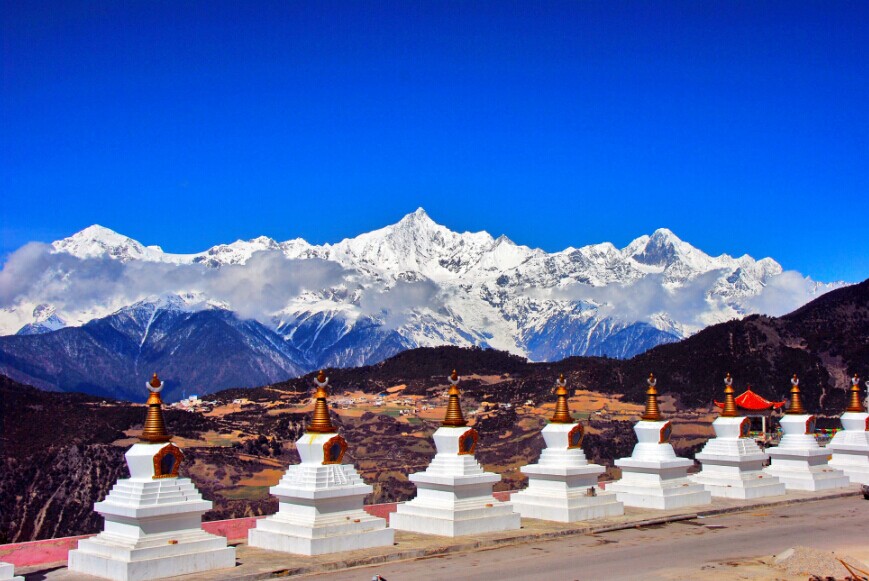Best Hiking Tours around Three Parallel River in Northwest Yunnan
In Yunnan, adventurous hiking is the king. Deep gorges, perilous peaks, breathtaking rice terraces, sleepy ethnic villages and wildlife teemed tropical jungles, Yunnan will satisfy your quest for sublime natural splendor and alluring tribe culture beyond the horizon.
Tiger Leaping Gorge, Meili Snow Mountain, Mingyong Glacier, Yubeng Village, Dulong River and Laojunshan Mountain are top six hiking destinations in Yunnan.
Best Hiking Tours around Three Parallel River in Northwest Yunnan

This trail is relatively well-developed thanks to those hardy outdoor aficionados. Tiger Leaping Gorge consists of three sections: upper, middle and lower. The upper and lower section consist of 28 bends each and the middle section is the most challenging. Covering the whole route will take two day and half a day. The difficulty level falls between mild and wild. Hence, you can have a sense of achievement and pride after finishing the trekking.

The most classic hiking route:
The Old Town of Lijiang—Daju(大具)—Walnut Garden—Zhongxia Guesthouse(中峡旅店), Middle Tiger Leaping Gorge Starry Sky(中虎跳满天星)—Halfway Guesthouse—28 Bends—Nuoyu Village(诺余村)—Qiaotou—return to the Old Town of Lijiang
Tips
You will pass along Heduanshan, the gere pool of fauna and flora species including azaleas in great varieties.
Watch out in the big waterfall between Walnut Garden and Zhongxia Guesthouse, for landslide is a common phenomenon
Make it happen by joining our 6-Day Lijiang-Shangri-La Sightseeing & Trekking Tour

Located in Three Parallel Rivers area, the converging site where Yunnan embraces Tibet, Meili Snow Mountain boasts 13 glacier-capped peaks towering over 6000m above the ground. Wagebo Peak at 6740m, is the highest in Yunnan.
Several routes are available for selection:
Inner Ring Mountain Circular Route
Tip: this route is not difficult. In adversity climate such as storm and snow, the road can be muddy. It will take four to five days and no map is needed.
Outer Ring Mountain Circular Route
Meili Snow Mountain(for one week)—Tibet—Yunnan
It is energy-sapping and strenuous. 13 days are needed to cover this route. Only those well-equipped and consummate trekkers will derive pleasure from it. In Shangri-La county, you can buy a map there.
Meili Snow Mountain to Bingzhongluo Village (one of Yunnan’s Top Six Folklore Destinations, Nujiang)
Route One: YongzhiVillage永芝村—Zou Suo Tong走索桶—Peacock Hill孔雀山垭口—Xinke—Dimaluo Township迪麻洛—Bingzhongluo丙中洛
Tip: depart from Deqin County to Yongzhi Village, the centerpiece of Deqin. It is famous for snow peaks, grasslands, lakes and village with many centenaries. Hire a horse there, pass along Zousuotong, Peacock Hill, Xinke and Dimuluo Township. After that, you can land on highways. Two days are needed.
Route Two: Cizhong茨中—Hanluo汉洛—Dimaluo Township迪麻洛—Bingzhongluo丙中洛
Leave Deqin County to Cizhong by car, then hire a horse in Cizhong. Pass Baihanluo during your way to Dimaluo. During the way, you will pass a hill elevated at 5000m. Two days are needed. Scenery of this routes is more breathtaking.

It is an integral part of Meili Snow Mountain. At first, this trail is used by devout pilgrims, nowadays, it is shared by hikers.
Mingyong Village—Taizi Monastery(太子庙)—Lotus Temple(莲花庙)—Glacier Sightseeing Terrace(冰川观景台)—descend to mountain foot
Start from the mountain foot, you will arrive at Taizi Monastery in two hours. Another one hour’s hike will bring you to Lotus Monastery perched on the summit. Stay in Glacier Sighting deck for a while, take photos and take in scenery. After that, descend to the foot of Meili Snow Mountain. It will take 4 to 5 hours in total. If you cannot get enough of this retreat, stay for the night and listen to the crack sound of ice and snowslide. Watch the spectacular sunrise in the following day is a highlight.

Yubeng Village is the nearest village to Meili Snow Mountain, it is also the highest. This hiking trail is mature and keeps drawing trekkers like a magnet.
Route: Xidang Hot Spring(西当温泉)—Nazonglayakou(那宗拉垭口)—Yubeng Upper Village(雨崩上村)—Ice Lake Big Camp(冰湖大本营)—Yubeng Lower Village(雨崩下村)—Divine Waterfall(神瀑)
Three to four days are needed. For those have more energy, you can add Divine Lake into the list. Divine Lake has a height difference of over 1000m, is very demanding.
Dulongjiang Hiking
Route one: Gongshan(高黎贡山)—Qiqi(期其)—East Guard Relay(东哨房used during wartime, it is a relic now, the houses have no roofs and walls)—Erdui(二队)—Bapo(巴坡)—Maku Village(马库村)—Qinlang Moon Waterfall(钦郎月亮大峡谷)—Maku Village(马库村)—Bapo—(巴坡)–Kongdang(孔当)
Tip: time needed: nine days. During the journey, you can enjoy the fantastic vistas of sub tropical forests, Gongligongshan Mountain and the Dulong River at foot. Sleeping bag, tents, anti-slipper mats, cooking gears and food are necessities.
If you want to experience the same scenery without experiencing so much hardship, the alternative is:
Kunming—Liuku—Gaoligong Mountain(高黎贡山)—Qiqi(期其)—East Guard Outpost(东哨房)—Bapo(巴坡)—Kongdang—Gaoligong Mountain(高黎贡山)
Tip: time needed: seven days. During the middle way, there are many guesthouses.
Best season: October


Laojun Hill extends for thousands of miles. Its main peak stands at a mind-blowing height of 4200m and is reputed as the ancestor of all hills in Yunnan. It is one of the quintessential part of Three Parallel Rivers.
Route: the Old Town of Lijiang—99 Dragon Pool(九十九龙潭)—Elong Lake(鳄龙海子)—xiaoqiao tou(小桥头)—Liju village(利苴村)—Golden Thread Factory(金丝厂)—Snub-nosed Monkey Observation site—Peach Garden—Shigu Town (the First Bend of Yangtze River)—the Old Town of Lijiang
Tip
Time needed: four days















